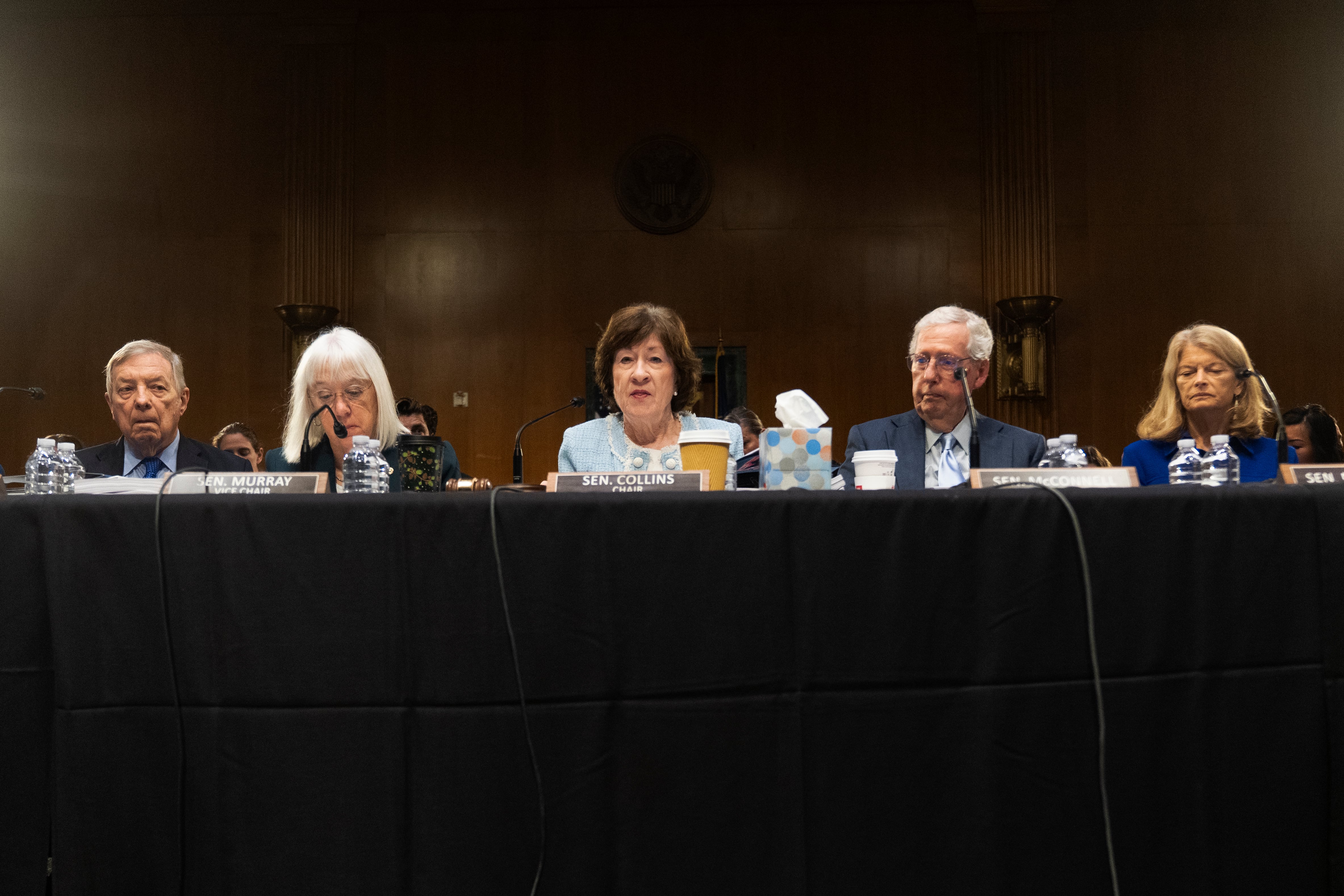Senate appropriators on Thursday advanced plans for a $456 billion budget for Veterans Affairs programs and benefits next fiscal year, putting it generally in line with House and White House goals for future department spending.
Unlike the House draft adopted last month, however, the Senate VA appropriations plan advanced out of committee with broad bipartisan support and without a bevy of controversial social issue amendments.
Sen. Susan Collins, R-Maine, and chairwoman of the Senate Appropriations Committee, praised the bill’s passage as an important step forward for the federal budget process and for supporting America’s veterans.
“It helps to fund the VA Health Care System, makes investments to improve mental health care, includes programs to assist in the prevention of veteran suicide, homelessness prevention programs, supports our family caregivers and expands care for our rural veterans,” she said. “It also funds important veterans benefits, including disabilities, pensions, the GI Bill and employment training programs.”
RELATED

House lawmakers’ budget plan for the department totaled about $453 billion, but both the House and Senate drafts call for roughly $134 billion in discretionary funding, money for new program starts and initiatives.
That total is slightly less than what White House officials asked for in their budget proposal, but only by about $1 billion.
Most of the debate in Thursday’s Senate Committee markup focused not on the VA spending plans but instead the controversial rescissions package adopted by the chamber the night before. That measure would pull back about $9 billion in congressionally authorized spending, including money for foreign aid and public media programs.
But those objections were not enough to deter most Democrats from backing the Republican-led VA budget plan.
The Senate proposal includes language ensuring that veterans “are never denied care or timely access to care as a result of the damaging or arbitrary cuts to the VA workforce,” a reference to recent workforce reductions at the department.
Last week, VA officials backtracked on earlier plans to trim up to 80,000 employees from the department’s payroll, instead projecting a reduction of about 30,000 individuals by the end of September.
Veterans Affairs leaders have seen regular budget increases annually for more than 20 years, even amid frequent congressional and White House efforts to reduce federal spending.
In fiscal 2001, the VA budget — both mandatory and discretionary — totaled just $45 billion. In 2011, it was about $125 billion. In fiscal 2023, the total topped $300 billion for the first time. The House-passed plan for fiscal 2026 would now push that total over the $400 billion level, and cost more than the combined fiscal 2025 budgets of the Army, Air Force and Marine Corps.
Senate officials have not said when the budget plan could come before the full chamber for a vote, but Collins said Republican leaders have committed to acting on the issue in coming months.
Leo covers Congress, Veterans Affairs and the White House for Military Times. He has covered Washington, D.C. since 2004, focusing on military personnel and veterans policies. His work has earned numerous honors, including a 2009 Polk award, a 2010 National Headliner Award, the IAVA Leadership in Journalism award and the VFW News Media award.





